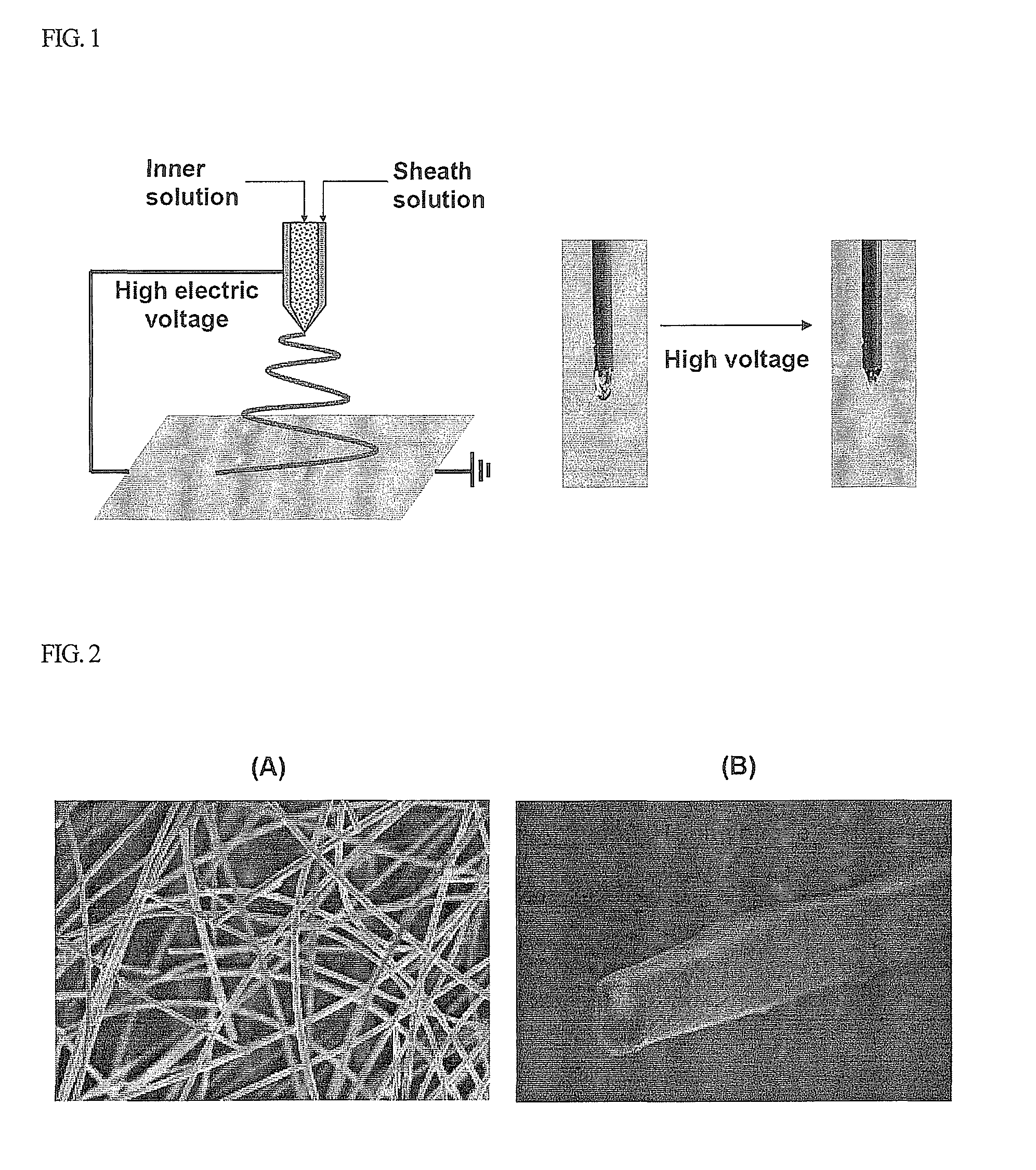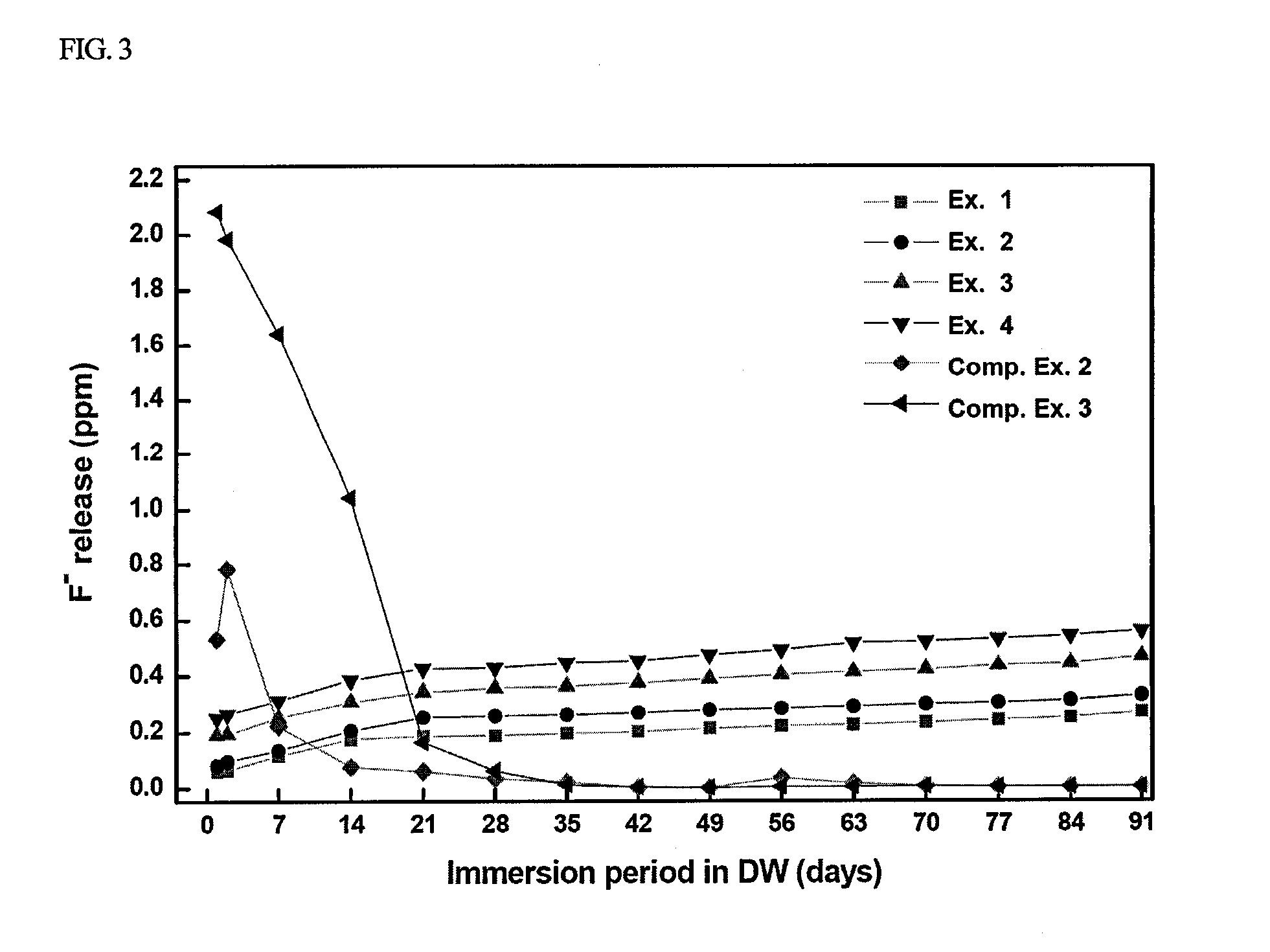Dental composition containing organic nanotube
- Summary
- Abstract
- Description
- Claims
- Application Information
AI Technical Summary
Benefits of technology
Problems solved by technology
Method used
Image
Examples
preparation example 1
An inner nozzle was filled with a solution of sodium fluoride as an antibacterial / anticariogenic material in dimethyl formamide (DMF), an outer nozzle was filled with a solution of polymethyl methacrylate (PMMA) in DMF, electrospinning was performed at a voltage of 16 V and the nozzles were then dried at ambient temperature to prepare a sodium fluoride-containing PMMA nanotube (hereinafter, simply referred to “fluorine-release organic nanotube”). The sodium fluoride contained in the nanotube thus prepared was present in an amount of 10 wt %, with respect to the total weight of the fluorine-release organic nanotube. A scanning electron microscope image of the fluorine-release organic nanotube is shown in FIG. 2.
example 1
1. Preparation of Photopolymerized Dental Restorative Composition
In accordance with the composition shown in Table 1 below, a photopolymerized dental restorative composition was prepared from the fluorine-release organic nanotube prepared in Example 1.
TABLE 1Content Ingredients(% by weight)2,2-bis-(4-(2-hydroxy-3-methacryloylpropoxy)phenyl)15propane (Bis-GMA)Triethylene glycol dimethacrylate (TEGDMA)5Urethanedimethacrylate (UDMA)5Barium aluminosilicate65.8Amorphous synthetic silica7Fluorine-release organic nanotube0.5Mix stabilizer of phenol and phosphite0.1Polymerization inhibitor (butyl hydroxy toluene)0.1Camphorquinone0.5Ethyl 4-(N,N-dimethylamino)benzoate1.0
example 2
A photopolymerized dental restorative composition was prepared in the same manner as in Example 1 except that the fluorine-release organic nanotube was added in an amount of 1% by weight and barium aluminosilicate was added in an amount of 65.3% by weight.
PUM
| Property | Measurement | Unit |
|---|---|---|
| Percent by mass | aaaaa | aaaaa |
| Percent by mass | aaaaa | aaaaa |
| Length | aaaaa | aaaaa |
Abstract
Description
Claims
Application Information
 Login to View More
Login to View More - R&D
- Intellectual Property
- Life Sciences
- Materials
- Tech Scout
- Unparalleled Data Quality
- Higher Quality Content
- 60% Fewer Hallucinations
Browse by: Latest US Patents, China's latest patents, Technical Efficacy Thesaurus, Application Domain, Technology Topic, Popular Technical Reports.
© 2025 PatSnap. All rights reserved.Legal|Privacy policy|Modern Slavery Act Transparency Statement|Sitemap|About US| Contact US: help@patsnap.com



